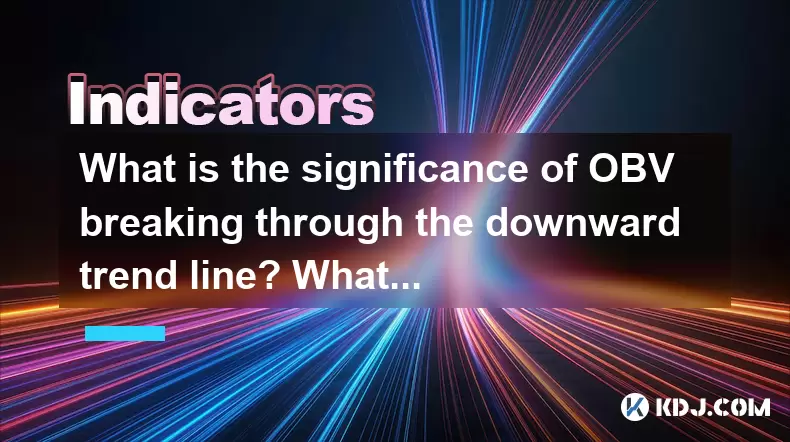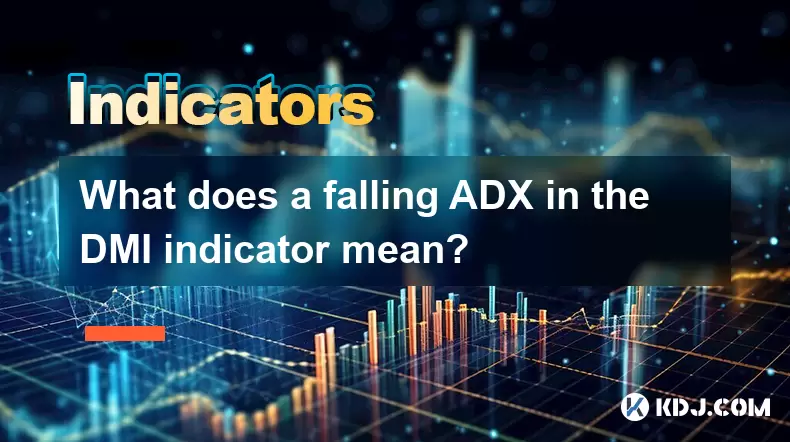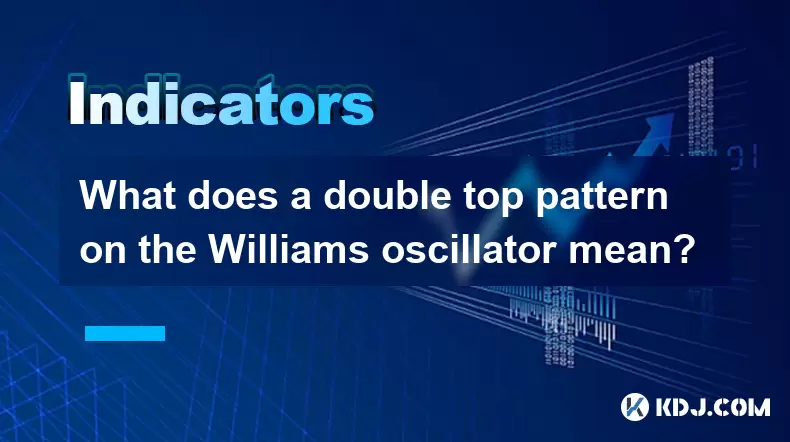-
 Bitcoin
Bitcoin $116700
0.24% -
 Ethereum
Ethereum $3973
4.34% -
 XRP
XRP $3.283
7.68% -
 Tether USDt
Tether USDt $1.000
0.01% -
 BNB
BNB $789.8
2.27% -
 Solana
Solana $176.2
3.31% -
 USDC
USDC $0.9999
0.00% -
 Dogecoin
Dogecoin $0.2238
5.14% -
 TRON
TRON $0.3389
-0.51% -
 Cardano
Cardano $0.7907
4.03% -
 Stellar
Stellar $0.4527
10.02% -
 Hyperliquid
Hyperliquid $41.07
4.27% -
 Sui
Sui $3.794
1.77% -
 Chainlink
Chainlink $19.49
10.40% -
 Bitcoin Cash
Bitcoin Cash $580.9
0.74% -
 Hedera
Hedera $0.2617
4.32% -
 Avalanche
Avalanche $23.41
3.67% -
 Ethena USDe
Ethena USDe $1.001
-0.03% -
 Litecoin
Litecoin $122.4
1.38% -
 Toncoin
Toncoin $3.364
1.49% -
 UNUS SED LEO
UNUS SED LEO $8.988
0.37% -
 Shiba Inu
Shiba Inu $0.00001295
2.82% -
 Uniswap
Uniswap $10.62
5.75% -
 Polkadot
Polkadot $3.922
4.46% -
 Dai
Dai $1.000
0.01% -
 Bitget Token
Bitget Token $4.494
2.15% -
 Monero
Monero $268.0
-1.30% -
 Cronos
Cronos $0.1523
3.68% -
 Pepe
Pepe $0.00001127
4.43% -
 Aave
Aave $285.4
4.85%
What is the significance of OBV breaking through the downward trend line? What are the signals of volume acceleration?
OBV breaking a downward trend line signals a shift from bearish to bullish sentiment, crucial for crypto traders to anticipate market reversals.
Jun 01, 2025 at 11:18 am

The significance of OBV (On-Balance Volume) breaking through a downward trend line in the cryptocurrency market is a crucial topic for traders and investors. OBV is a momentum indicator that uses volume flow to predict changes in stock price. When OBV breaks through a downward trend line, it suggests a potential shift in market sentiment from bearish to bullish. This article will delve into the significance of this event and the signals of volume acceleration, providing detailed insights and operational guidance.
Understanding OBV and Its Role in Cryptocurrency Trading
On-Balance Volume (OBV) is an indicator that measures buying and selling pressure as a cumulative indicator that adds volume on up days and subtracts volume on down days. When the price of a cryptocurrency rises, the volume is added to the OBV, and when the price falls, the volume is subtracted. The core idea behind OBV is that volume precedes price movement. Therefore, a rising OBV indicates positive volume pressure that can lead to higher prices, while a falling OBV suggests negative volume pressure, potentially leading to lower prices.
In the context of cryptocurrency, where market sentiment can shift rapidly, OBV provides traders with an early warning system for potential price movements. By tracking the OBV, traders can gauge the strength of a trend and anticipate reversals before they become evident in price action alone.
Significance of OBV Breaking Through a Downward Trend Line
When OBV breaks through a downward trend line, it is a significant event that suggests a shift in market dynamics. A downward trend line on the OBV chart indicates that the volume is supporting the downward price movement. Breaking through this line suggests that buying pressure is increasing, which could lead to a reversal of the downtrend.
This event is particularly important in the cryptocurrency market, where trends can be short-lived and volatile. A break in the OBV downward trend line can signal that the bearish trend is losing momentum, and a bullish trend might be on the horizon. Traders often use this signal to adjust their positions, either by closing short positions or initiating long positions in anticipation of a price increase.
Signals of Volume Acceleration
Volume acceleration is another critical aspect that traders monitor to understand market dynamics. Volume acceleration refers to a significant increase in trading volume over a short period, which can indicate a strong market move. There are several signals that traders look for to identify volume acceleration:
- Sudden spikes in volume: A sudden increase in trading volume, especially when accompanied by a price move, can indicate strong buying or selling pressure.
- Consistent increase in volume over several periods: If volume is steadily increasing over multiple trading sessions, it suggests a growing interest in the cryptocurrency, which could lead to a significant price move.
- Volume divergence: When volume increases while the price remains stable or moves in the opposite direction, it can signal an impending breakout or reversal.
How to Identify OBV Breaking Through a Downward Trend Line
To identify when OBV breaks through a downward trend line, traders need to follow a series of steps. Here’s a detailed guide on how to do this:
- Choose a charting platform: Select a reliable charting platform that supports OBV, such as TradingView or Coinigy.
- Add OBV to your chart: Navigate to the indicators section and add the OBV indicator to your chart. Ensure that the OBV is plotted alongside the price chart for easy comparison.
- Draw the downward trend line: Identify the recent peaks in the OBV and draw a line connecting these peaks. This line will represent the downward trend.
- Monitor the OBV movement: Keep an eye on the OBV as it approaches the downward trend line. If the OBV starts to move above this line, it suggests a potential break.
- Confirm the break: Wait for the OBV to close above the trend line for at least two consecutive periods to confirm the break. This helps to avoid false signals.
Practical Application of OBV and Volume Acceleration in Trading
Applying the insights from OBV and volume acceleration in real-time trading scenarios can enhance a trader's decision-making process. Here are some practical steps to integrate these indicators into your trading strategy:
- Use OBV as a confirmation tool: When you identify a potential price breakout or reversal, use the OBV to confirm the move. If the OBV supports the price action, it increases the likelihood of a successful trade.
- Combine OBV with other indicators: For a more robust analysis, combine OBV with other technical indicators such as Moving Averages, RSI, or MACD. This can help to filter out false signals and provide a more comprehensive view of market conditions.
- Monitor volume acceleration for entry and exit points: When you notice volume acceleration, consider it as a signal to enter or exit a trade. High volume can indicate strong market interest, which can lead to significant price moves.
- Set stop-loss and take-profit levels: Based on the signals from OBV and volume acceleration, set appropriate stop-loss and take-profit levels to manage risk and lock in profits.
Interpreting OBV and Volume Acceleration in Different Market Conditions
The interpretation of OBV and volume acceleration can vary depending on the prevailing market conditions. In a bullish market, a break in the OBV downward trend line can be a strong signal to go long, as it suggests increasing buying pressure. Conversely, in a bearish market, traders should be cautious and look for additional confirmation before entering long positions.
In a sideways market, volume acceleration can be particularly useful. If the price is range-bound but volume starts to increase, it could signal an impending breakout. Traders can use this information to position themselves for the potential move.
Frequently Asked Questions
Q: Can OBV be used effectively in all types of cryptocurrencies, or is it better suited for certain types?
A: OBV can be applied to any cryptocurrency, but its effectiveness may vary depending on the liquidity and trading volume of the asset. For highly liquid cryptocurrencies like Bitcoin and Ethereum, OBV tends to be more reliable due to the higher volume of trades. For less liquid altcoins, the signals from OBV might be less consistent and require additional confirmation from other indicators.
Q: How often should traders check OBV and volume acceleration to make informed decisions?
A: Traders should check OBV and volume acceleration regularly, ideally on a daily basis, to stay updated on market conditions. However, during periods of high volatility or significant news events, more frequent checks (such as hourly) may be necessary to capture rapid changes in market sentiment.
Q: Are there any specific time frames that are more suitable for using OBV and volume acceleration?
A: The suitability of time frames for using OBV and volume acceleration depends on the trader's strategy and time horizon. For short-term traders, shorter time frames like 15-minute or 1-hour charts can provide timely signals. For long-term investors, daily or weekly charts might be more appropriate to capture broader trends and volume movements.
Q: Can OBV and volume acceleration be used together with fundamental analysis in the cryptocurrency market?
A: Yes, OBV and volume acceleration can complement fundamental analysis. While OBV and volume acceleration provide insights into market sentiment and trading activity, fundamental analysis can offer a deeper understanding of the cryptocurrency's intrinsic value and potential for long-term growth. Combining both approaches can lead to more informed investment decisions.
Disclaimer:info@kdj.com
The information provided is not trading advice. kdj.com does not assume any responsibility for any investments made based on the information provided in this article. Cryptocurrencies are highly volatile and it is highly recommended that you invest with caution after thorough research!
If you believe that the content used on this website infringes your copyright, please contact us immediately (info@kdj.com) and we will delete it promptly.
- Roman Storm, Funding Effort, and the Looming Defense Retrial: A New York Minute on the Tornado Cash Case
- 2025-08-09 02:50:14
- Crypto's Wild Ride: XRP, Dogecoin, and the Altcoin Surge You Can't Ignore
- 2025-08-09 02:50:14
- Elon Musk, Bitcoin, and the Enduring Power of Approval: A Crypto Love Story?
- 2025-08-09 03:50:15
- Ruvi AI: The Next Big Thing After Ripple on CoinMarketCap?
- 2025-08-09 03:50:15
- Floki Price Surges: Elliott Wave and Fibonacci Setups Point to Potential Gains!
- 2025-08-09 02:30:16
- Pepe Price, RTX (Remittix?) & the $10K ETH Dream: NYC Crypto Chatter
- 2025-08-09 02:30:16
Related knowledge

What does it mean when the TRIX indicator suddenly diverges downward after a long period of convergence?
Aug 09,2025 at 12:56am
Understanding the TRIX Indicator in Cryptocurrency TradingThe TRIX indicator, or Triple Exponential Average, is a momentum oscillator used in technica...

Why is the rise limited after a MACD bottoming divergence?
Aug 09,2025 at 12:07am
Understanding MACD Bottoming Divergence in Cryptocurrency TradingThe MACD (Moving Average Convergence Divergence) is a widely used technical indicator...

What does it mean when the OBV continues to rise but the price is trading sideways?
Aug 08,2025 at 10:35pm
Understanding On-Balance Volume (OBV)On-Balance Volume (OBV) is a technical indicator that uses volume flow to predict changes in stock or cryptocurre...

What does a falling ADX in the DMI indicator mean?
Aug 09,2025 at 03:16am
Understanding the ADX and DMI Indicator FrameworkThe DMI (Directional Movement Index) is a technical analysis tool developed by J. Welles Wilder to id...

What does a double top pattern on the Williams oscillator mean?
Aug 09,2025 at 02:36am
Understanding the Williams %R OscillatorThe Williams %R oscillator is a momentum indicator developed by Larry Williams to identify overbought and over...

What is a nonce and how is it used in Proof of Work?
Aug 04,2025 at 11:50pm
Understanding the Concept of a Nonce in CryptographyA nonce is a number used only once in cryptographic communication. The term 'nonce' is derived fro...

What does it mean when the TRIX indicator suddenly diverges downward after a long period of convergence?
Aug 09,2025 at 12:56am
Understanding the TRIX Indicator in Cryptocurrency TradingThe TRIX indicator, or Triple Exponential Average, is a momentum oscillator used in technica...

Why is the rise limited after a MACD bottoming divergence?
Aug 09,2025 at 12:07am
Understanding MACD Bottoming Divergence in Cryptocurrency TradingThe MACD (Moving Average Convergence Divergence) is a widely used technical indicator...

What does it mean when the OBV continues to rise but the price is trading sideways?
Aug 08,2025 at 10:35pm
Understanding On-Balance Volume (OBV)On-Balance Volume (OBV) is a technical indicator that uses volume flow to predict changes in stock or cryptocurre...

What does a falling ADX in the DMI indicator mean?
Aug 09,2025 at 03:16am
Understanding the ADX and DMI Indicator FrameworkThe DMI (Directional Movement Index) is a technical analysis tool developed by J. Welles Wilder to id...

What does a double top pattern on the Williams oscillator mean?
Aug 09,2025 at 02:36am
Understanding the Williams %R OscillatorThe Williams %R oscillator is a momentum indicator developed by Larry Williams to identify overbought and over...

What is a nonce and how is it used in Proof of Work?
Aug 04,2025 at 11:50pm
Understanding the Concept of a Nonce in CryptographyA nonce is a number used only once in cryptographic communication. The term 'nonce' is derived fro...
See all articles

























































































